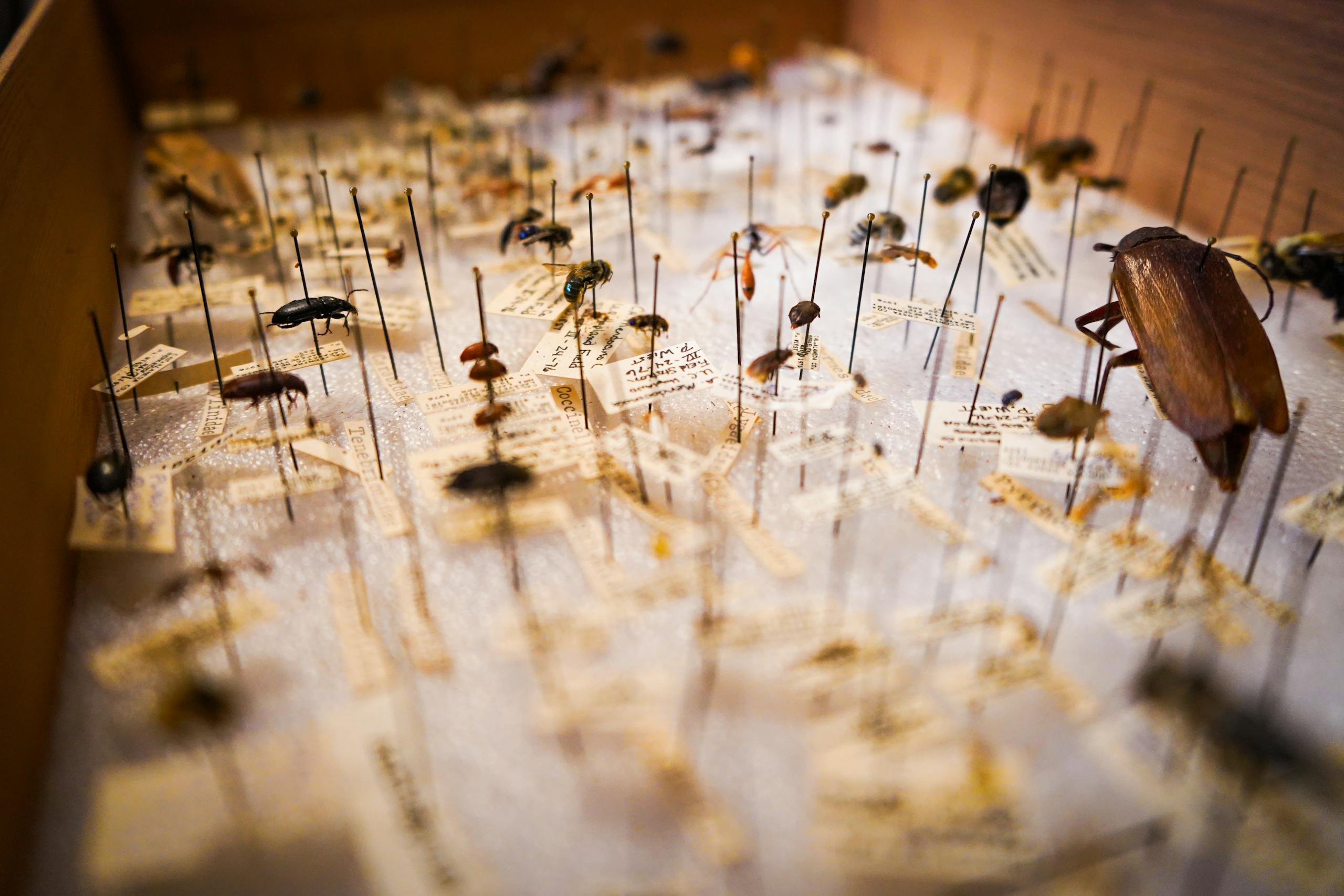Cockroach Infestations Found to Raise Household Allergen and Endotoxin Levels, Says NC State Study

A new North Carolina State University study has revealed a direct connection between cockroach infestations and the amount of allergens and endotoxins present in homes. The findings, published in the Journal of Allergy and Clinical Immunology: Global, provide strong evidence that reducing cockroach populations can significantly improve indoor environmental health by lowering these harmful substances.
Understanding What the Study Looked At
The research team, led by Coby Schal and Madhavi Kakumanu at NC State, conducted their study across multi-unit apartment complexes in Raleigh, North Carolina, focusing primarily on low-income urban homes. These locations were chosen because such housing tends to experience higher pest activity and poorer ventilation — both factors that can affect air quality.
The goal was to measure how the size of cockroach infestations influences the amount of cockroach allergens and bacterial endotoxins in the home environment. The scientists also wanted to find out whether pest control interventions could effectively lower these levels over time.
Homes were divided into three categories:
- Infested homes with no treatment
- Infested homes that received extermination
- Non-infested homes (control group)
Researchers collected settled and airborne dust samples from each home to measure allergen and endotoxin concentrations. These samples were taken before any extermination, and again three and six months later.
What Are Endotoxins and Why Do They Matter?
Endotoxins are molecules from the outer membranes of certain bacteria that are released when the bacteria die. When inhaled, these microscopic components can trigger inflammation and allergic reactions in humans.
While endotoxins can come from pets, humans, and general household dust, this study found that cockroaches are a major contributor — especially through their fecal matter. Because cockroaches have a diverse gut microbiome (they eat almost anything), their feces are packed with bacterial remnants, which shed endotoxins into the surrounding environment.
Repeated exposure to these airborne particles can exacerbate asthma, particularly among children and people in low-income households, where infestations are more common.
How the Study Was Conducted
The team conducted both lab-based and field-based research. In laboratory tests, they quantified how much endotoxin male and female cockroaches excreted in their feces. The results were striking:
- Female cockroaches shed about 2,900 endotoxin units (EU) per milligram of feces.
- Male cockroaches shed roughly 1,400 EU per milligram.
This difference was linked to feeding behavior — females eat more to sustain egg production, leading to greater microbial activity in their digestive systems and thus more endotoxin release.
In field homes, the team placed traps and monitors to estimate infestation size, and simultaneously gathered dust samples from multiple rooms. The kitchen consistently showed higher concentrations of allergens and endotoxins than bedrooms, which aligns with the fact that most cockroaches live near food and moisture sources.
The Impact of Extermination
The homes that underwent professional extermination (using integrated pest management methods rather than just chemical sprays) saw a sharp decline in both cockroach numbers and measured endotoxin levels over the six-month period.
In contrast, infested homes that did not receive treatment continued to show very high allergen and endotoxin concentrations in both settled and airborne dust, even after several months.
The study concluded that only complete elimination of cockroaches led to meaningful reductions in allergen and endotoxin levels. Minor decreases in cockroach populations did not help — remaining roaches continued depositing large amounts of allergens and endotoxins.
Airborne Allergens: Not Just in the Dust
Another key finding was that cockroach allergens and endotoxins were not limited to surface dust. They were also found floating in the air, meaning that people could breathe them in without direct contact with contaminated surfaces.
This airborne pathway adds an extra layer of risk, especially for children and individuals with respiratory sensitivities. The researchers suggested that improving ventilation systems, air filtration, and cleaning methods could help reduce inhalation exposure in addition to controlling pests.
What Makes This Study Important
This research is more than just another pest-control report — it highlights how environmental health, housing conditions, and pest biology intersect. Cockroaches are not simply unpleasant; they act as biological carriers of substances that directly impact human respiratory health.
Previous surveys across the United States had already shown that homes with visible cockroach evidence tend to have higher endotoxin levels. However, this study goes further by confirming a causal connection through controlled extermination and monitoring. It also emphasizes that this problem is more severe in multi-unit low-income housing, where pest control access may be limited.
The findings strongly support the idea that pest management should be considered part of public health strategy — not just a matter of sanitation or comfort.
Broader Context: Cockroaches and Human Health
Cockroaches are one of the oldest surviving insect lineages, dating back over 300 million years. Their incredible adaptability allows them to thrive in urban environments where food, warmth, and shelter are abundant.
There are over 4,500 known species of cockroaches, but only a handful — such as German cockroaches (Blattella germanica) and American cockroaches (Periplaneta americana) — commonly infest human dwellings.
Their droppings, saliva, and shed skins contain potent allergens that can provoke asthma, allergic rhinitis, and eczema. In fact, studies have shown that cockroach allergen exposure is one of the strongest predictors of asthma in inner-city children in the U.S.
Cockroaches also carry bacteria, including species like Salmonella, E. coli, and Staphylococcus, on their bodies and in their digestive tracts. These pathogens can contaminate food surfaces and contribute to gastrointestinal illness.
By connecting these known health effects to endotoxin production, the NC State research adds another layer of understanding to how these pests impact human environments.
Practical Takeaways for Households
- Consistent Pest Control – Routine extermination, sealing cracks, and improving sanitation are essential. Once cockroaches are gone, allergen and endotoxin levels drop sharply.
- Focus on Kitchens – Since kitchens host the largest roach populations, they should be kept dry, clean, and free of leftover food or grease buildup.
- Air Quality Measures – Using HEPA filters and improving ventilation can reduce airborne allergen exposure.
- Maintenance in Multi-Unit Buildings – Infestation in one apartment can easily spread through ducts and shared walls. Coordinated pest management is necessary across the entire complex.
What’s Next for the Researchers
The NC State team plans to continue studying how cockroach allergens and endotoxins interact in animal models, especially mice with asthma-like symptoms. They aim to see whether these substances together make respiratory problems worse — a question with significant implications for human health.
The researchers also want to better understand the biochemical pathways that make female cockroaches produce higher levels of endotoxins, as this might help refine pest-control strategies.
Why This Matters
This study shows that cockroaches are more than a nuisance — they are an indoor environmental hazard. Eliminating them not only reduces visible pests but also leads to cleaner air, less allergen exposure, and potentially fewer asthma attacks.
For millions of people living in densely populated housing, this is actionable science: control the pests, and you can measurably improve the quality of the air you breathe.
Research Reference:
Kakumanu, M. L., Santangelo, R. G., DeVries, Z. C., Siegel, J. A., & Schal, C. (2025). Indoor Allergens and Endotoxins in Relation to Cockroach Infestations in Low-Income Urban Homes. Journal of Allergy and Clinical Immunology: Global. DOI: 10.1016/j.jacig.2025.100571





